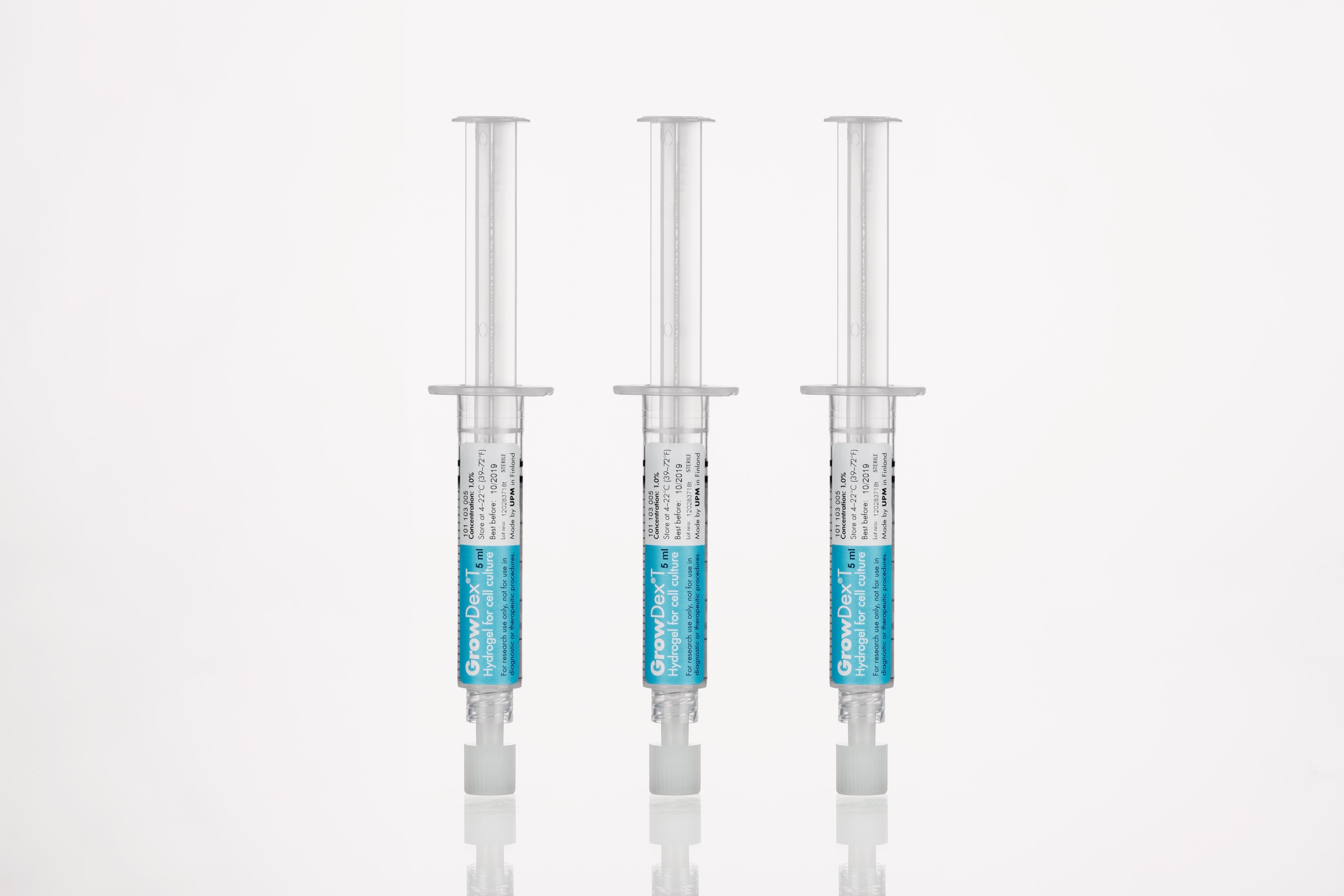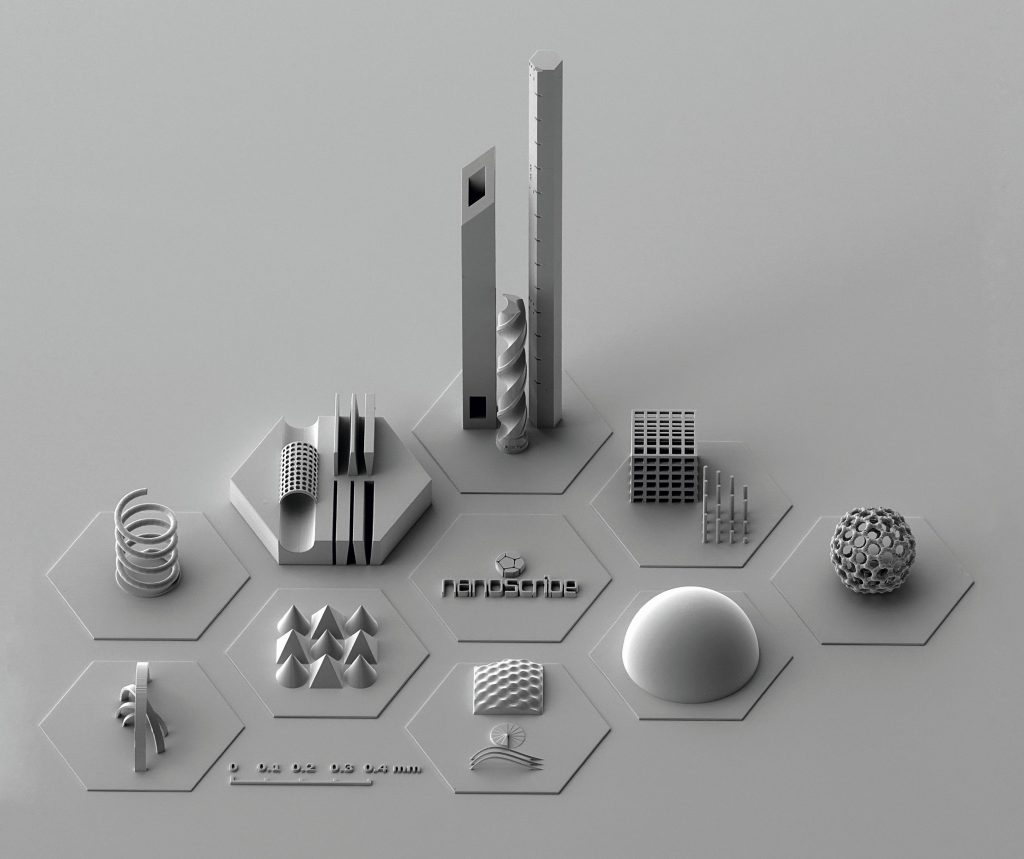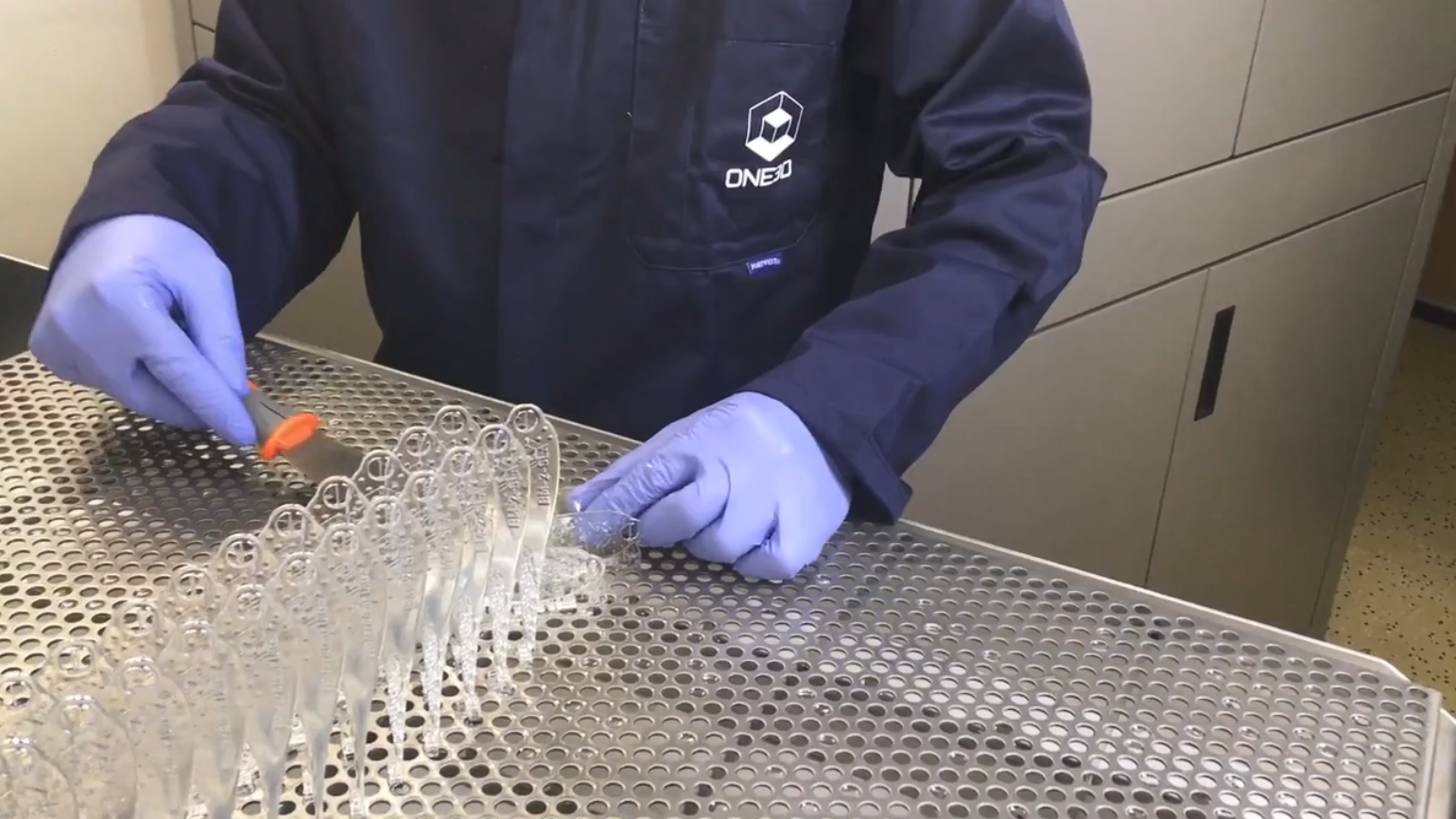This week’s edition of Sliced, the 3D Printing Industry news digest features 3D printed toys to scramjet engines, and the latest preview of TCT 2019.
We also cover Xometry, Zortrax, UPM, CELLINK, GE Additive, 3D Systems, Ultimaker, One3D, Nanoscribe, EOS, CRP Group, Carbon, BigRep, Hybrid AM Systems and more.
A new hydrogel for 3D bioprinting
Swedish 3D bioprinter and materials developer CELLINK has acquired single-cell dispensing company Cytena. Cytena technology seamlessly dispenses cells into well plates. Integrating this technology into CELLINK’s process, proliferation of each single cell is monitored by the CELLCYTE X platform. Using the BIO X system, tissues are then bioprinted from individual cells.
Finnish alternative energy and material company UPM has launched a new hydrorgel GrowDex-T, suitable for 3D bioprinting. Sourced from responsibly managed forests, renewable Finnish birch is the key ingredient of this hydrogel. The ready-to-use hydrogel is room temperature stable with tunable stiffness, and has imaging properties for 3D cell visualization.

Nexxt Spine, an Indiana-based medical device manufacturer has attained FDA 510(k) clearance of its NEXXT MATRIXX Stand Alone Cervical System. Joining the family of 3D printed NEXXT MATRIXX implants, the Stand Alone Cervical System implants include spacers made with GE Additive’s MLAB 3D printer. The system functions as an adjunct in skeletally mature patients for the treatment of degenerative disc disease.
Copper 3D, a Chilean 3D printing materials company has partnered with Toylisto, an online platform that turns 2D drawings into 3D printable designs. Together the companies are turning drawings into real toys for children with immunosuppression. Using Copper 3D’s antimicrobial materials, the 3D printed toys are safe and clean to play with. The Oncology Unit of Luis Calvo Mackenna Children’s Hospital in Chile has trusted Copper 3D and Toylisto to pilot this project. With much success, Copper 3D and Toylisto want to donate 100 antimicrobial toys this year for the children of this hospital. Support them in this effort here.
Carbon joins Xometry
Xometry, an on-demand manufacturing marketplace, now offers Carbon DLS technology as an option for 3D printing. On 14 August 12 – 1 pm ET, engineers from Carbon and Xometry will be holding a live webinar to introduce the technology, its application and design optimization.
In the oil and gas industry, Italy’s Aidro Hydraulics & 3D Printing and EOS have signed a partnership agreement. Together, the two companies will create guidelines and standards for qualifying AM metallic parts to use with petroleum and natural gas. They will also support key players perform feasibility analysis of additive manufacturing.
Recently, Aidro expanded its services to oil and gas, producing valves, heat exchangers, hydraulic manifolds and spare parts. With EOS, Aidro will develop new technical solutions for oil and gas products and high volume production processes.
As part of its internationalization strategy, Nanoscribe, a German microfabrication 3D printer manufacturer opened its first U.S. subsidiary in Boston on 1 August. In addition to expanding the current science and research market, the company also intends to introduce its technology to the industrial environment.

Japanese manufacturing company Sodick has opened a new European headquarter in the UK. Its new Warwick facility showcases the firm’s flagship EDM equipment alongside its plastic injection molding, milling and additive manufacturing technologies. Sodick’s hybrid 3D printing system OPM Series offers metal additive manufacturing and high-speed milling in a single machine.
Bringing full color 3D printing to small businesses
Czech Republic-based 3D printing service bureau One3D has invested in RPS’ large format stereolithography system NEO800. One3D will be using NEO800 to 3D print plastic parts for its clients in the automotive, rail, metallurgical, medical and food industry. The 3D printing service bureau also announced its plans to build an additive manufacturing development centre in Mohelnice.
American additive manufacturing service bureau Custom Color 3D Printing has purchased two HP Jet Fusion 580 Color 3D printers. Extensively partnering with small and medium sized businesses, the bureau offers prototyping, customizations, small productions and other full color 3D printing services. With the new printers, multiple engineering-grade thermoplastic parts in full color can be produced in the time it takes to print a single part.

Award winning OEM GE Additive has shipped the first Concept Laser M Line Factory from Germany to the U.S.. The system will be based at GE Aviation’s Additive Technology Center in Cincinnati. Interestingly, the system was transported on a Boeing 747-8 Freighter powered by GEnx-2B jet engines – door opening system brackets for this engine are soon to enter mass production on GE Additive Concept Laser M2 cusing Multilaser machines in Alabama.
Certifying 3D printed plastics
Award-winning American 3D printer OEM 3D Systems has announced a new flexible material for its Figure 4 platform. Designed for the production of exceptionally durable parts, the new material Figure 4 FLEX-BLK 10 looks and feels like molded polypropylene. With great break and impact strength, FLEX-BLK 10 paves the way for a wider variety of prototyping, functional testing and low volume production applications. Later in the year, 3D Systems plans to release more new materials for Figure 4. This includes an ABS-like black material with high UV stability, a transparent amber and a white biocompatible material, and an ultrahigh thermal-resistant material.

Dutch 3D printer manufacturer Hybrid AM Systems has implemented the UL 746D certification for its HMS434 FFF machine. The UL 746D standard defines the requirements for identification and traceability of plastic items. Complying to this certification, users can identify the plastic material used in a HMS434 quickly and reliably. The machine and print settings can also be identified and traced similarly.
Scramjet engines and racing motorcycles
Two competitors in the DARPA Hypersonic Air-breathing Weapon Concept (HAWC) programme – Northrop Grumman and Aerojet Rocketdyne – are 3D printing engines to bring their scramjet-powered hypersonic cruise missiles into test flights in 2020. Other than saving on production costs and lead times, 3D printing also enables previously impossible engine geometries. By changing the contours of the inside of a scramjet, the flow of air and fuel and hence performance is improved. To build on its work with the Boeing X-51A aircraft, Aerojet Rocketdyne acquired 3D Material Technologies in March 2019 to expand its AM capabilities.The more ambitious Northrop Grumman is aiming to 3D print its engine in its entirety, including the critical combustor.
Award winning 3D materials manufacturer CRP Technology and manufacturing service provider CRP Meccanica provided end use components of Ego Corsa, a racing electric bike. The two CRP Group companies worked as technological partners of italian electric motorbike manufacturer Energica in the FIM Enel MotoE World Cup. CRP Technology 3D printed parts using Windform composite materials whereas CRP Meccanica manufactured components using high precision CNC machining. In the first round held last month, the new Ego Corsa debuted at the Sachsenring racetrack in Germany.
Short Run Manufacturing: 3D Printing vs Injection Molding
In a feasibility study “3D Printing with Automated Post-Processing Stage in Short Run Manufacturing”, Zortrax has analyzed the performance of FDM/ FFF 3D printing with an automatic post-processing stage. Running multiple cost simulations for numerous business scenarios, 3D printing is examined in contrast to injection molding under the same conditions. Zortrax manufactured a short series of 500 computer fan covers with the M200 Plus 3D printer and used the Apoller SVS device for automated post-processing.
Conclusions show that although injection molding has a slight edge in a one-off production, this edge begins to vanish with growing complexity of the product. The flexibility of 3D printing presents higher manufacturing output at lower cost per unit in continuous short-run manufacturing. Furthermore, 3D printers with automated post-processing do not need retooling each time a product design is changed. Such savings also grow over time in short-run manufacturing.

Additive manufacturing events
Inside/Outside, a symposium on the professional use of desktop 3D printing was held on 8 – 9 August. New York University Tandon School of Engineering and Ultimaker co-hosted the event at the NYU Tandon MakerSpace. Both days were packed with industry and faculty presentations, interactive workshops on scanning, 3D print preparation, and applied case studies. Inside, the first day focused on the medical uses of 3D printing and prototyping around the very small. Outside, the second day focused on architecture and construction and working with scales greater than 1:1. Amy Alexander from Mayo Clinic was invited as the Inside’s keynote speaker while Melodie Yashar from SEArch+ spoke at the Outside’s keynote.
At TCT Show 2019, Stratasys has announced that its’ customers Angel Trains and DB ESG will deliver a keynote on 3D printing replacement parts for UK railways. Visitors will also hear about other key customers in the transportation industry leveraging Stratasys rail-certified materials, such as Bombardier and Siemens Mobility. Making its UK debut, the recently launched F120 3D printer will be running live on stand. A number of workshops will teach users how to take designs all the way from CAD model to 3D printed model with the F120. See more from Stratasys in Hall 3, Stand C50 throughout TCT Show 2019.
Our deepest sympathy
The 3D printing industry recently mourned the loss of René Gurka, co-founder and former CEO of large scale 3D printing company BigRep. Described as a “true visionary”, Gurka founded the company in 2014. He was also the Managing Director of the German American Chamber of Commerce in San Francisco, and of Berlin Partner GmbH, promoting Berlin as a business and technology hub.
“René energized BigRep as a global brand from its foundation,” commented the company in a statement. “He brought his personality and global thinking to the company’s core. René’s spirit lives on at BigRep where his limitless energy continues to fuel the daily lives of everyone here. […] Our thoughts are with René’s family. We are committed to fulfilling his vision for BigRep.”
Sharing his insights on the future of additive manufacturing with 3D Printing Industry in 2017, the respected industry figure said, “One thing is certain: we are at the beginning of a technical revolution. AM technology will decisively influence the entire value chain in industrial production over the next five years. We should take advantage of this opportunity! Think Big- Go BigRep!”.
Subscribe to the 3D Printing Industry newsletter, like us on Facebook and follow us on Twitter for all the latest additive manufacturing news. Find your next opportunity on 3D Printing Jobs.



